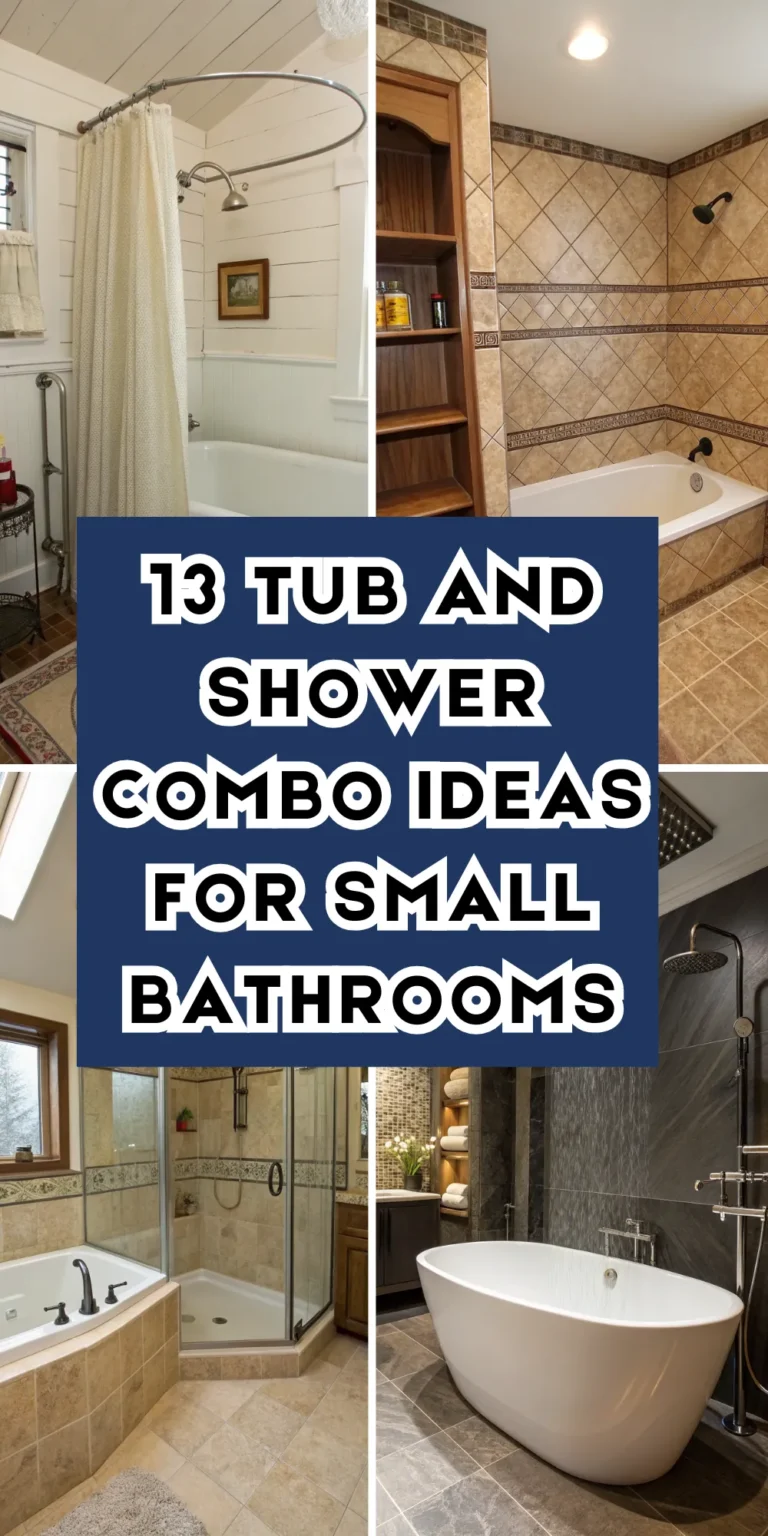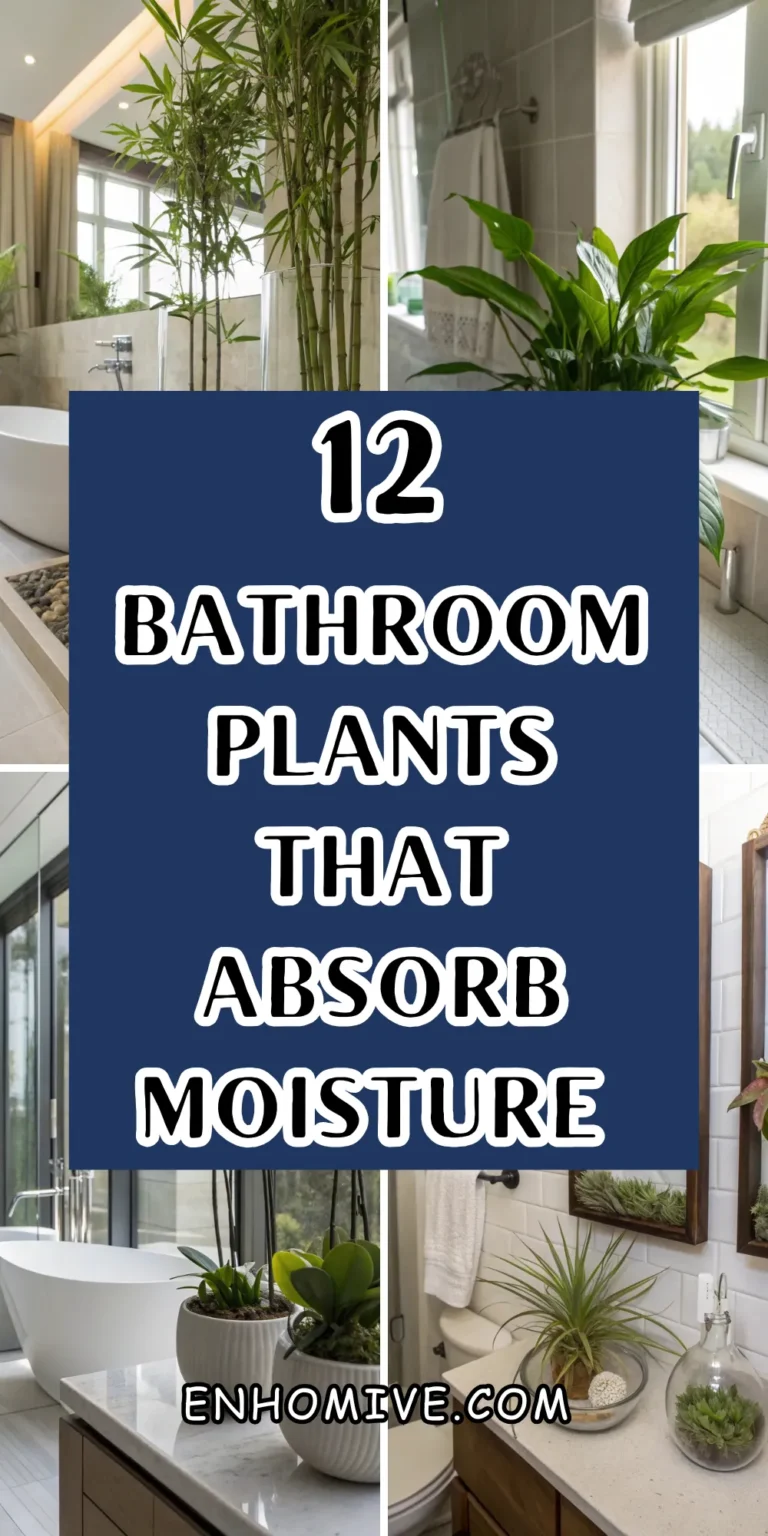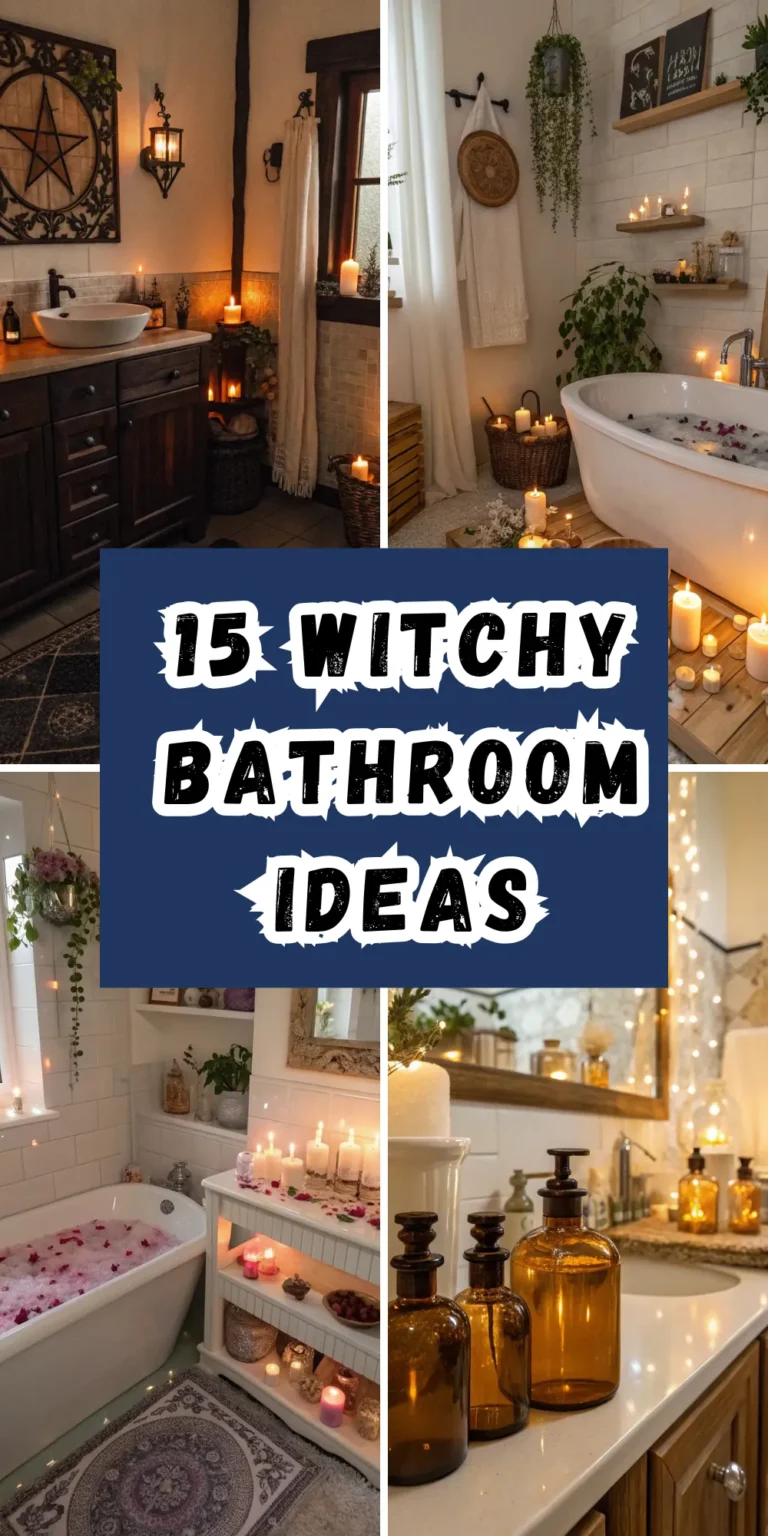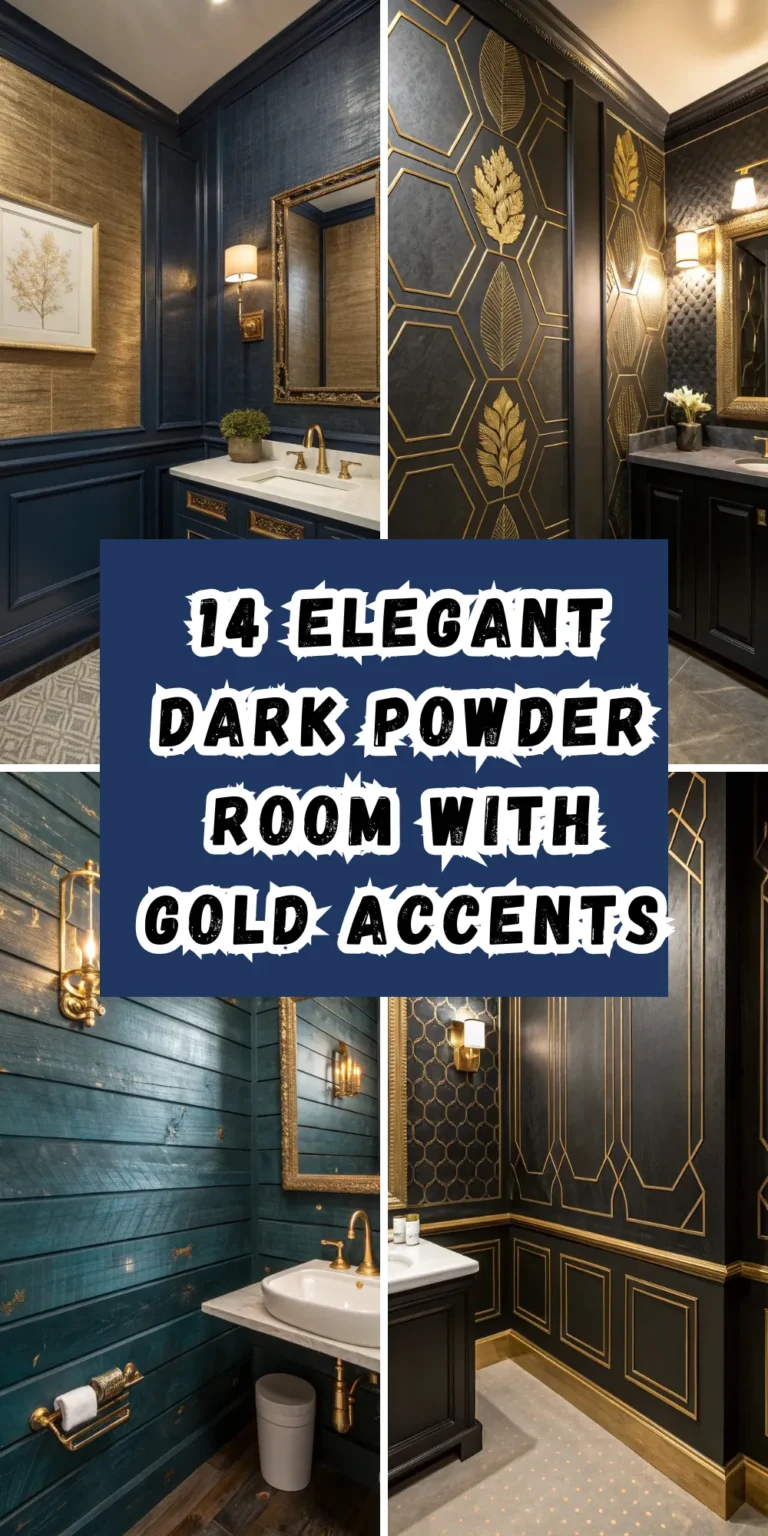12 Plants for Bathrooms Without Windows
Windowless bathrooms are being transformed into lush, spa-like retreats through the strategic use of low-light plants that thrive in humid, artificial light conditions. Modern plant varieties have evolved to flourish in these challenging environments, bringing natural beauty and air-purifying benefits to spaces that were once considered unsuitable for greenery.
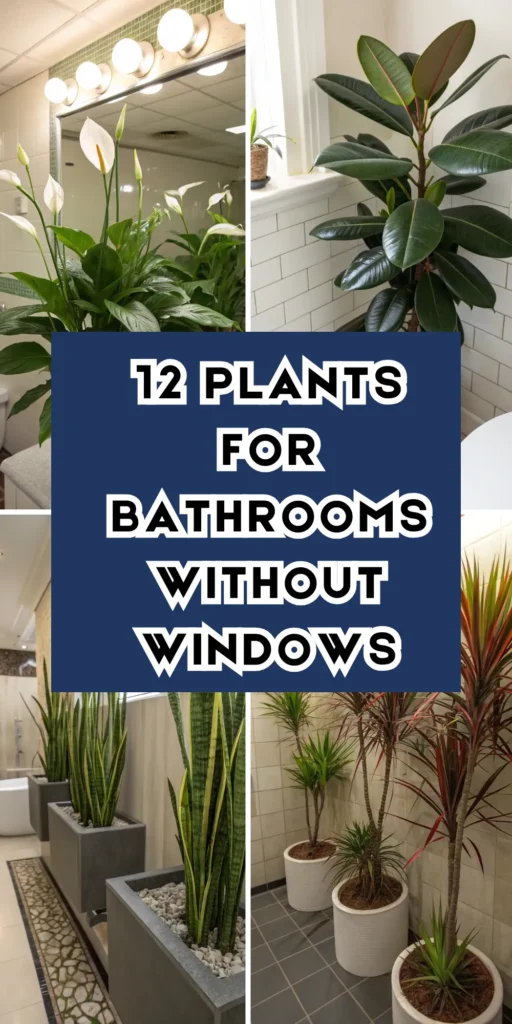
The secret to successful windowless bathroom gardening lies in selecting plants that naturally prefer indirect light and high humidity while supplementing with appropriate artificial lighting when needed. When chosen thoughtfully, these resilient plants can create the same calming, natural atmosphere found in luxury spas and high-end hotels.
ZZ Plant (Zamioculcas zamiifolia)
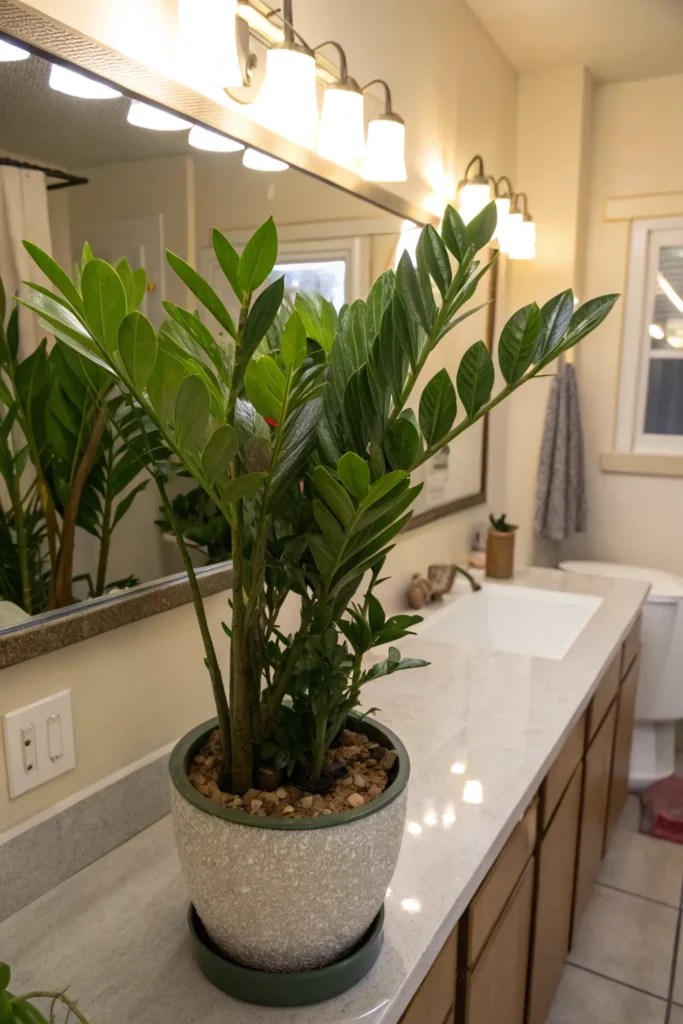
Why this works: This sculptural plant tolerates extremely low light conditions while requiring minimal water, making it perfect for busy bathrooms with inconsistent care schedules.
Implementation: A medium-sized ZZ plant is positioned on a bathroom counter or floor stand where it receives some ambient light from overhead fixtures. Watering is needed only when soil feels completely dry, typically every 2-3 weeks.
Who benefits: Those wanting dramatic, architectural plant presence without high maintenance requirements or natural light availability.
Pro tip: The glossy leaves are wiped clean monthly to maintain their shine and maximize their ability to photosynthesize under artificial lighting conditions.
Snake Plant (Sansevieria trifasciata)
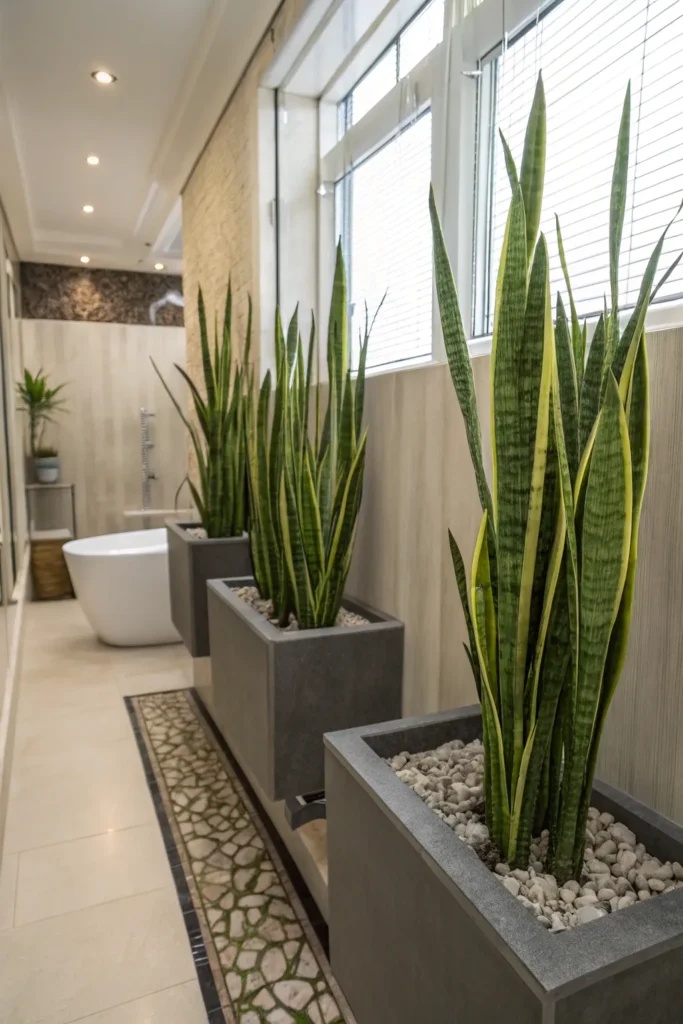
Transform your bathroom into a modern oasis with this striking vertical plant that thrives in low light while purifying the air naturally.
Implementation: Snake plants are placed in tall, narrow planters that complement bathroom fixtures while taking advantage of vertical space. Multiple varieties in different heights create visual interest without overwhelming small spaces.
Best for: Those wanting air purification benefits and dramatic architectural presence in bathrooms with limited floor space.
Con: Overwatering can cause root rot, but proper drainage and infrequent watering prevent issues while the plant tolerates neglect beautifully.
Pothos (Epipremnum aureum)
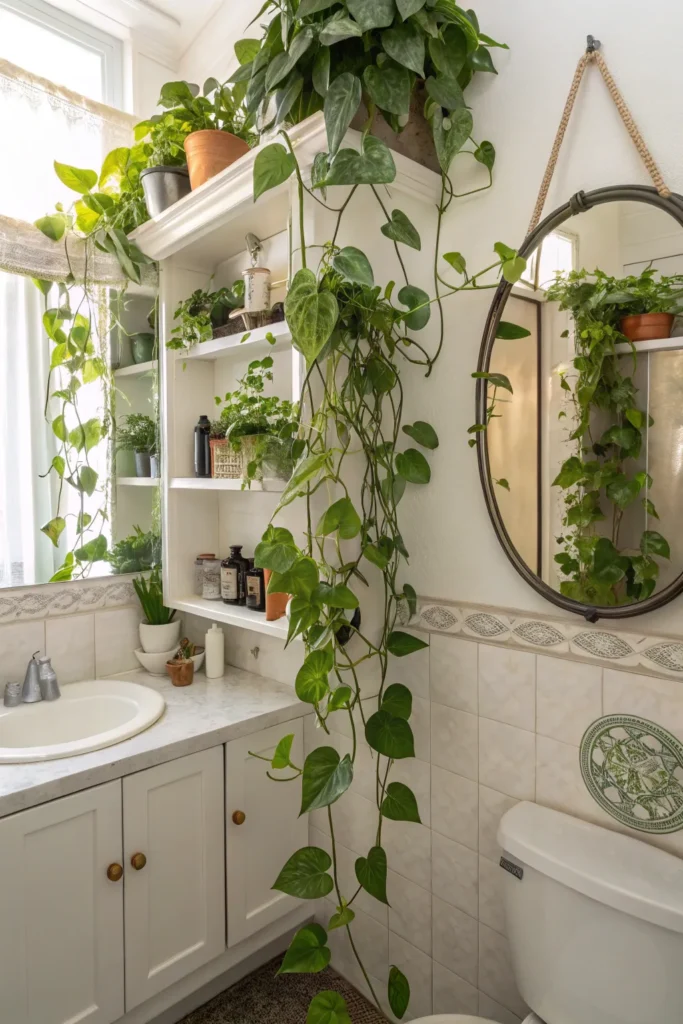
Why try this? Trailing vines create cascading greenery that softens hard bathroom surfaces while thriving in humidity and low-light conditions.
Steps: Pothos is positioned on high shelves, medicine cabinets, or hanging planters where vines can trail gracefully. Regular misting takes advantage of natural bathroom humidity while supplementing plant moisture needs.
Why it works: The heart-shaped leaves and trailing growth pattern add organic softness to angular bathroom fixtures while requiring minimal care and attention.
Styling tip: Vines are trained around mirrors, over shower doors, or along bathroom edges to create natural frames and visual interest throughout the space.
Peace Lily (Spathiphyllum)
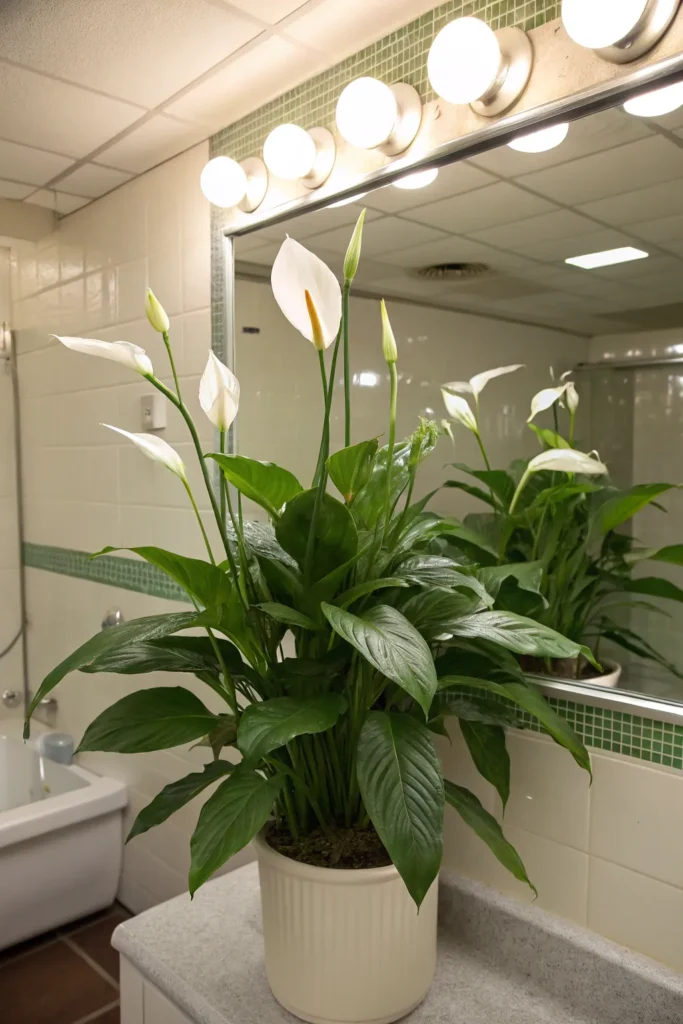
Add elegant white blooms and lush foliage to windowless bathrooms with this humidity-loving plant that signals its watering needs clearly.
How to: Peace lilies are positioned where they receive bright artificial light from overhead fixtures while benefiting from shower steam and humidity. The soil is kept consistently moist but not waterlogged.
Why it matters: White flowers provide natural beauty and fragrance while the plant actively purifies bathroom air and thrives in the humid environment.
Pro tip: Drooping leaves indicate watering needs, making this plant perfect for beginners who want clear signals about plant care requirements.
Chinese Evergreen (Aglaonema)

Create colorful focal points with variegated Chinese evergreens that bring pattern and color to neutral bathroom palettes while tolerating low light.
Implementation: Plants with silver, pink, or red variegation are chosen to complement bathroom color schemes. They’re positioned on counters or stands where artificial light reaches the leaves regularly.
Who it’s for: Those wanting colorful plants that add visual interest without requiring natural sunlight or frequent care adjustments.
Con: Cold drafts can damage leaves, but bathroom environments typically provide the consistent temperatures these plants prefer year-round.
Boston Fern (Nephrolepis exaltata)
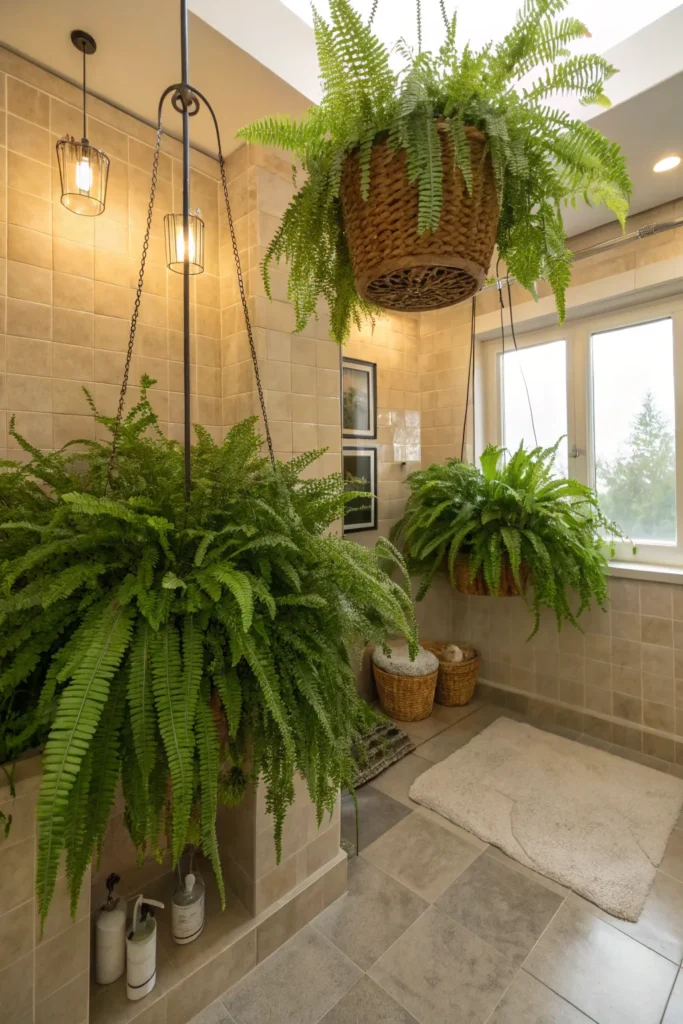
Why try this? Lush, feathery fronds create a spa-like atmosphere while thriving in the humid conditions that windowless bathrooms naturally provide.
How-to: Boston ferns are placed in hanging baskets or on plant stands where they receive indirect artificial light while benefiting from shower humidity. Regular misting supplements their moisture needs between waterings.
Best for: Those wanting classic, elegant greenery that creates immediate spa ambiance and softens modern bathroom fixtures.
Con: Regular humidity is essential, but bathroom environments naturally provide ideal conditions that would be difficult to replicate elsewhere.
Cast Iron Plant (Aspidistra elatior)
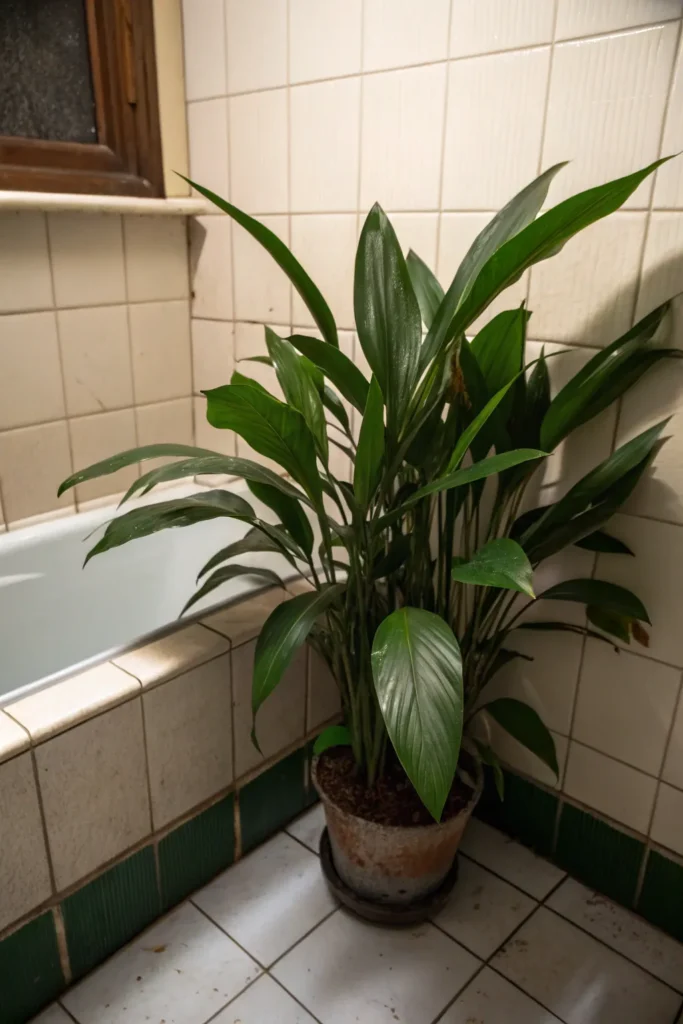
Transform challenging bathroom corners with this virtually indestructible plant that earned its name from its ability to thrive in difficult conditions.
Steps: Cast iron plants are positioned in low-light corners or areas where other plants have failed. Watering is needed only when soil feels dry, and the plant tolerates neglect remarkably well.
Why it’s helpful: Dark green foliage provides consistent color and texture while requiring minimal attention or special care requirements.
Pro tip: Leaves are wiped clean regularly to remove dust and maintain their ability to photosynthesize efficiently under artificial lighting conditions.
Philodendron Heartleaf
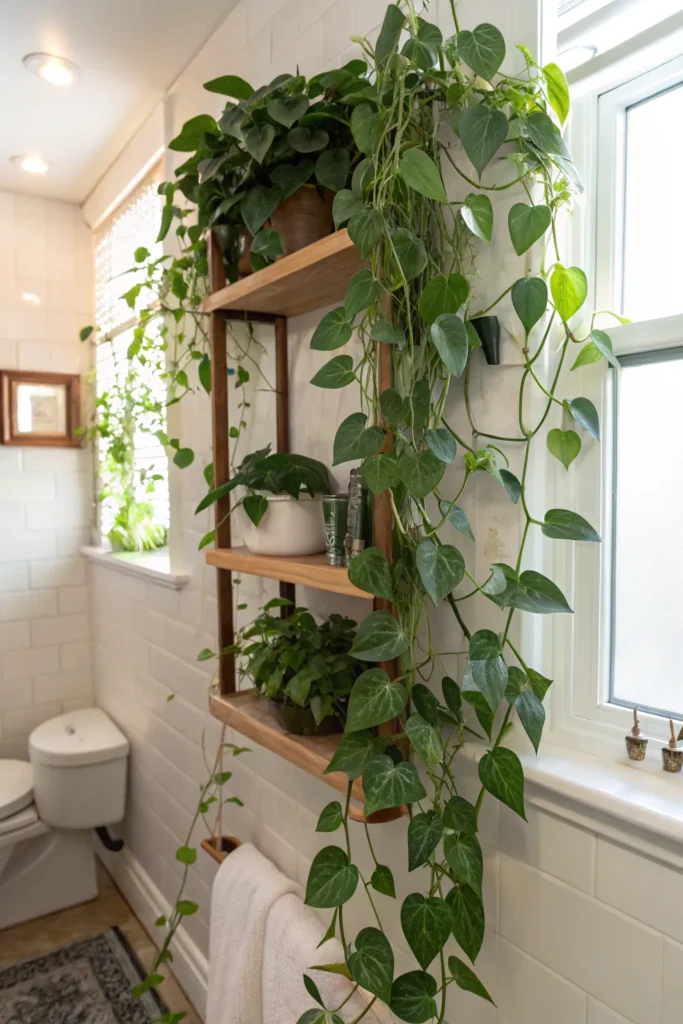
Add romantic, trailing greenery with heart-shaped leaves that cascade beautifully from bathroom shelves while tolerating low-light conditions perfectly.
Benefits: Vines grow quickly to fill empty spaces while requiring minimal care beyond occasional watering and misting. The plant adapts to available light conditions while maintaining healthy growth.
Steps: Heartleaf philodendrons are positioned where vines can trail naturally while receiving some artificial light. Pruning encourages fuller growth and prevents overgrowth in small spaces.
Best for: Those wanting fast-growing greenery that creates immediate impact while adapting to challenging bathroom conditions.
Styling tip: Multiple plants at different heights create layered greenery that adds depth and natural beauty throughout the bathroom space.
Dracaena Marginata
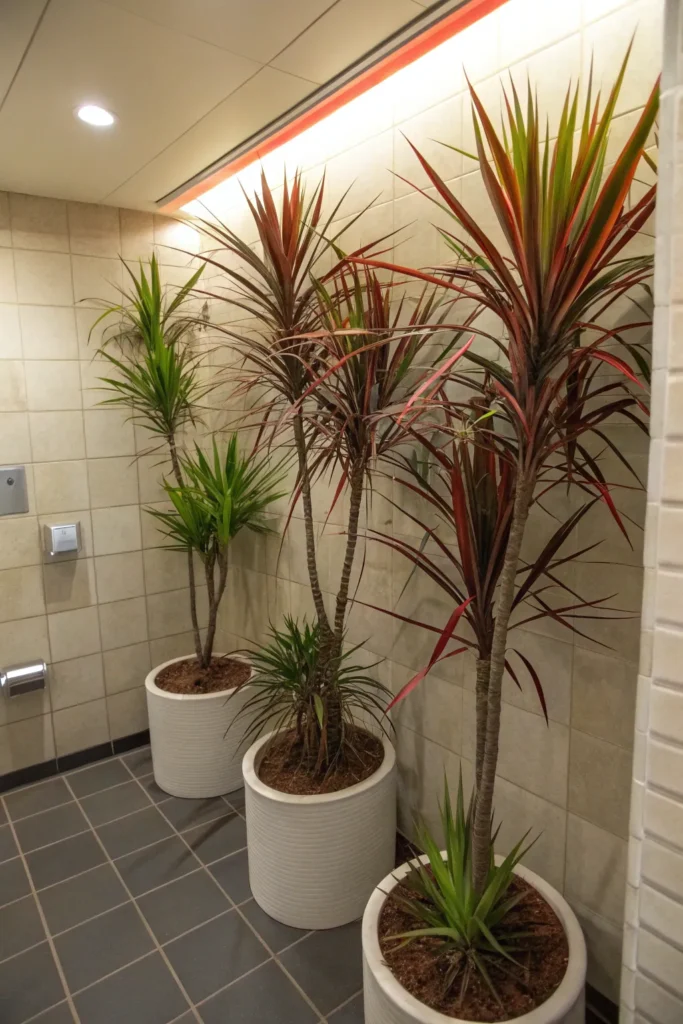
Create dramatic vertical interest with spiky, colorful foliage that adds architectural presence while thriving under artificial lighting conditions.
Implementation: Dracaenas are chosen in sizes appropriate for available floor space while their upright growth habit maximizes impact without overwhelming small bathrooms. Red-edged varieties add color contrast.
Who benefits: Those wanting statement plants that provide height and drama while requiring minimal maintenance and no natural sunlight.
Downside: Growth is slower in low light, but the plant remains healthy and attractive while adapting to available conditions over time.
Air Plants (Tillandsia species)
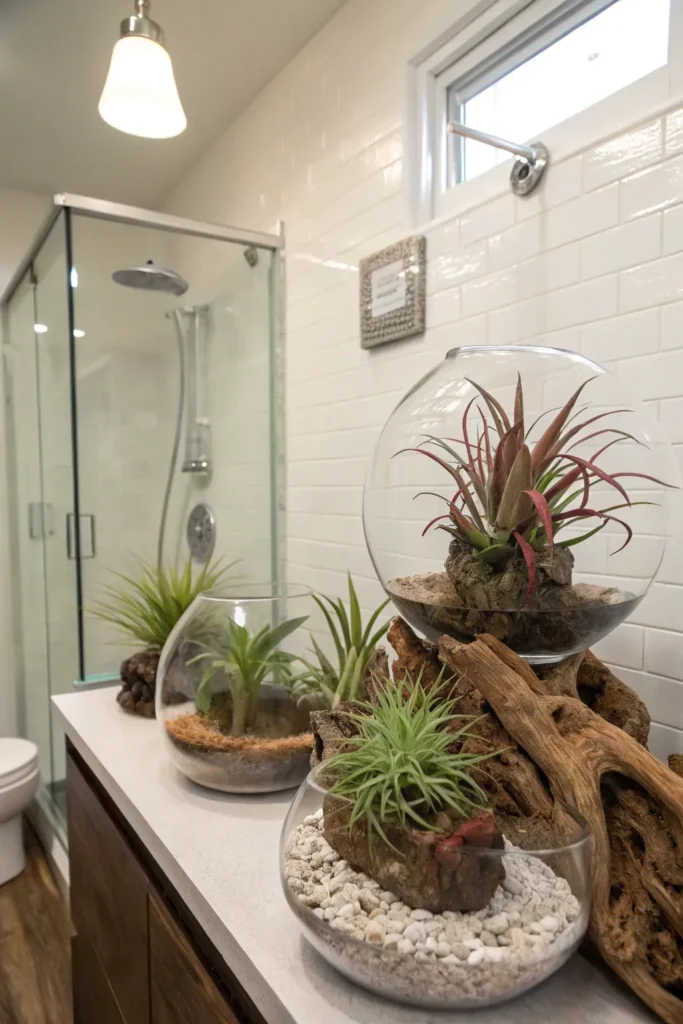
Add unique, sculptural elements that require no soil while absorbing moisture directly from humid bathroom air naturally.
How to: Air plants are displayed in glass terrariums, mounted on driftwood, or arranged in decorative holders where they receive bright artificial light. Weekly misting provides supplemental moisture beyond ambient humidity.
Why it works: These unusual plants create conversation pieces while requiring no traditional planting or watering, making them perfect for creative bathroom displays.
Downside: Proper air circulation is important to prevent rot, but bathroom exhaust fans typically provide adequate airflow for healthy growth.
Rubber Plant (Ficus elastica)

Transform bathroom corners with glossy, dramatic foliage that creates instant sophistication while tolerating low-light conditions beautifully.
How-to: Rubber plants are positioned where they receive bright artificial light while having room for their broad leaves to spread. Weekly watering and occasional leaf cleaning maintain their attractive appearance.
Why it’s great: Large, glossy leaves create immediate impact and sophistication while the plant adapts to bathroom conditions without special requirements.
Drawback: Plants can grow quite large over time, but regular pruning maintains appropriate size while encouraging bushier, more attractive growth patterns.
Monstera Deliciosa
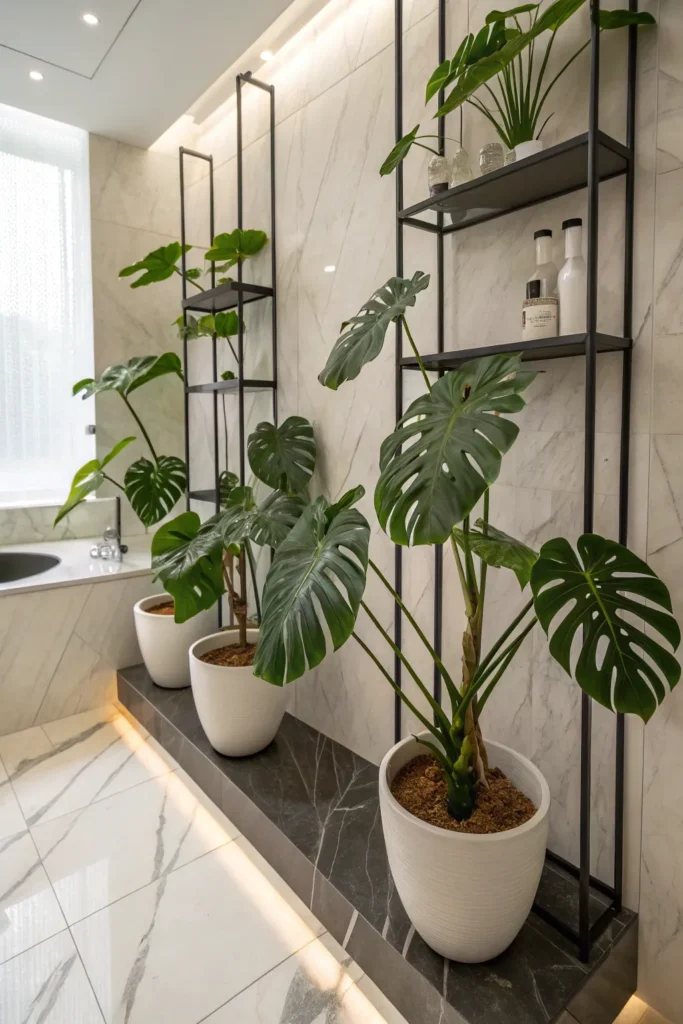
Create tropical luxury with split-leaf plants that bring exotic beauty to windowless bathrooms while thriving in humid, low-light conditions.
Steps: Young monstera plants are chosen for their manageable size while their distinctive leaves create immediate tropical appeal. Support stakes help maintain attractive growth patterns as plants mature.
Best for: Those wanting dramatic, tropical plants that create spa-like luxury while adapting to challenging bathroom environments successfully.
Con: Plants can become quite large, but their dramatic presence and adaptability make them worthwhile additions to larger bathroom spaces.
Conclusion
Windowless bathrooms offer unique opportunities to create lush, plant-filled retreats using species that thrive in humid, low-light conditions. The most successful bathroom gardens combine multiple plant varieties with appropriate artificial lighting to create spa-like environments that rival any naturally lit space. Start with hardy, low-maintenance varieties and expand your collection as confidence grows, transforming your windowless bathroom into a green sanctuary.


